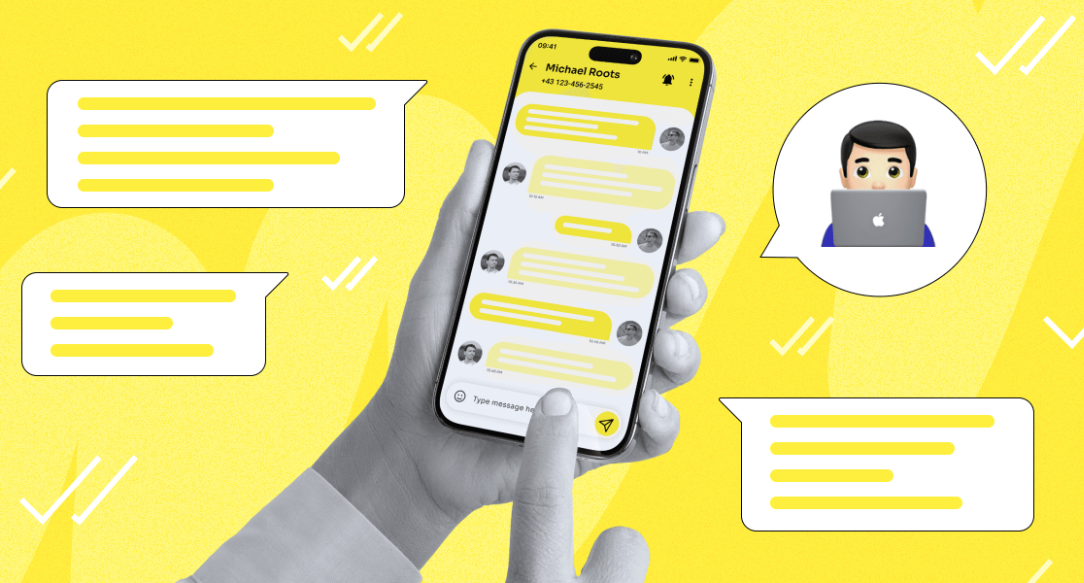
In today’s hyper-connected world, messaging apps like WhatsApp have become an indispensable part of our daily lives. They allow us to stay connected with friends, family, and colleagues across the globe, instantly sharing text, photos, videos, and even voice calls. But what if you have a vision for a messaging app that goes beyond the features offered by existing giants like WhatsApp? Perhaps you have a niche market in mind or innovative features you want to introduce.
This blog delves into the exciting world of building your own messaging app. We’ll explore the key steps involved, from understanding the core functionalities to ensuring robust security and carving out a unique space in the competitive market.
Understanding the Messaging App Landscape:
The landscape of messaging apps is constantly evolving, with established players like WhatsApp, Telegram, and Signal vying for user attention. Newer entrants with specific functionalities, like Snapchat for ephemeral messaging or Discord for the gaming community, are also carving out their niches. If you want to create app like WhatsApp, it’s crucial to analyze the existing market before embarking on your app development journey.
- Identify your target audience: Who are you building this app for? Is it for a specific age group, a professional network, or a community with unique communication needs?
- Research existing features: Analyze the features offered by popular messaging apps. What functionalities are essential, and where are potential gaps you can address?
Core Features for Your Messaging App:
Once you have a clear understanding of your target audience and the competitive landscape, it’s time to define the core features your app will offer. Here are some fundamental functionalities to consider:
- Real-time messaging: This includes one-on-one chats, group chats, and potentially broadcast messaging for announcements.
- Media sharing: Allow users to share photos, videos, audio files, and documents seamlessly.
- Contact management: Integrate a user-friendly address book for adding and managing contacts.
- Voice and video calls: Take communication to the next level with high-quality voice and video calling features.
- File transfer: Enable users to share large files easily, making collaboration more efficient.
- Notifications: Keep users informed about incoming messages and missed calls with clear and timely notifications.
Standing Out from the Crowd – Innovative Features:
While replicating WhatsApp’s core functionalities might be a good starting point, true success lies in differentiation. Here are some ideas to help your app stand out:
- Focus on security and privacy: Implement robust encryption protocols and user control over data to build trust with your users.
- Ephemeral messaging: Introduce a feature where messages disappear after a set time, catering to those who prefer a more private communication style.
- Self-destructing media: Let users send photos and videos that vanish after a set time, adding an extra layer of control over shared content.
- Unique communication tools: Consider features like voice notes with playback speed adjustments, in-chat polls, or collaborative whiteboard tools.
- Gamification and personalization: Enhance user engagement with gamification elements like stickers, themes, and customizable avatars.
Building a Secure and Scalable App:
Security should be a top priority when developing your messaging app. Here are some key considerations:
- End-to-end encryption: Ensure that only the sender and recipient can decrypt messages, preventing unauthorized access.
- Secure authentication: Implement strong authentication procedures, like two-factor authentication, to safeguard user accounts.
- Data security: Store user data securely and adhere to data privacy regulations.
- Scalability: Design your app to handle a growing user base without compromising performance.
The Development Process:
Developing a messaging app requires expertise in various areas. Here’s a simplified breakdown of the process:
- Planning and prototyping: Clearly define your app’s functionalities, user interface (UI), and user experience (UX). Develop prototypes to test and refine your vision.
- App development: Choose a suitable development platform (iOS, Android, or cross-platform) and start coding. Back-end development will handle server-side operations like message delivery and data storage.
- Testing and deployment: Rigorous testing ensures your app functions flawlessly. Once satisfied, deploy your app to the respective app stores (Apple App Store and Google Play Store).
Monetization Strategies:
There are various ways to generate revenue from your messaging app. Here are a few models to consider:
- Subscription model: Offer premium features like increased storage or ad-free experience for a monthly or yearly subscription fee.
- In-app purchases: Provide virtual items or add-ons, like custom chat themes or sticker packs, for purchase within the app.
- Freemium model: Offer a basic version of your app for free, with the option to unlock advanced features through in-app purchases.
Conclusion
Building a messaging app requires planning, technical expertise, and a commitment to innovation. By understanding your target audience, focusing on security and unique features, and following a well-defined development process, you can create a compelling app that stands out in the crowded market. Remember, the key to success lies in offering a valuable and differentiated communication experience that resonates with your users.